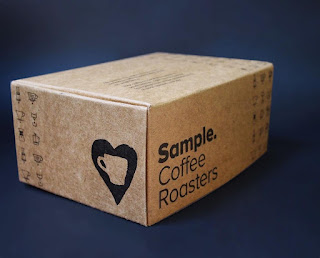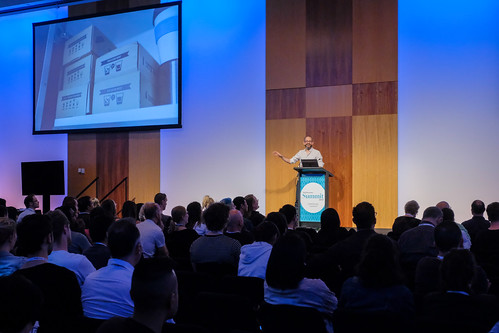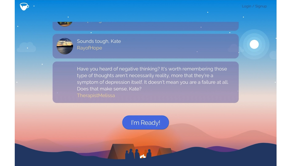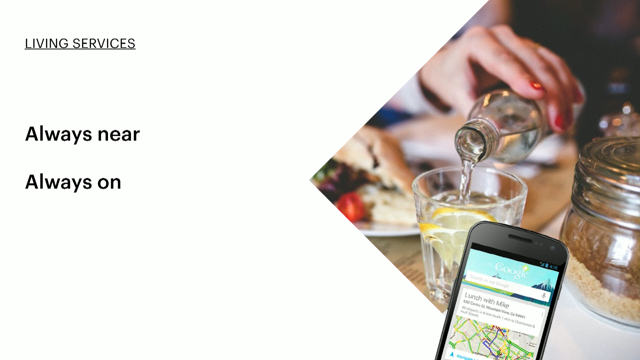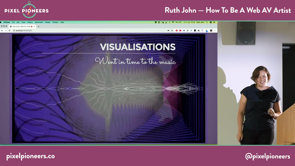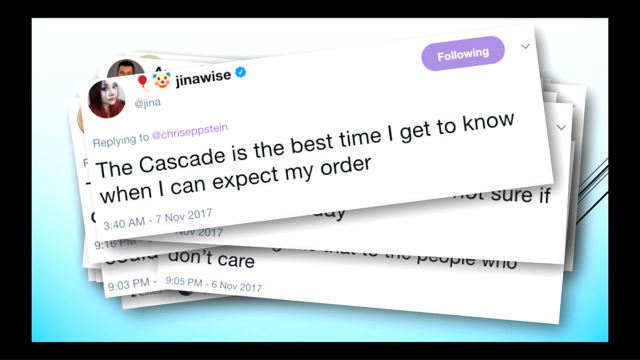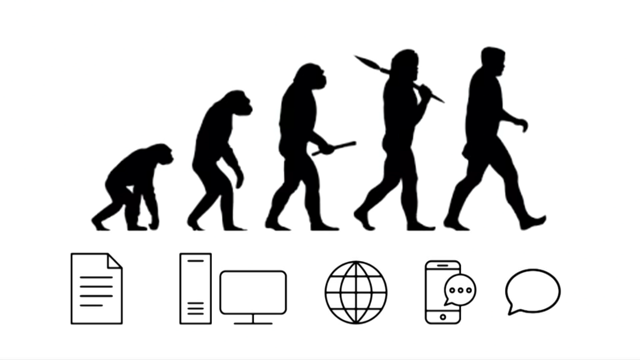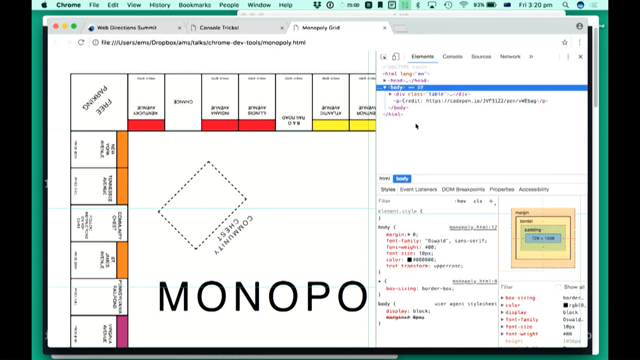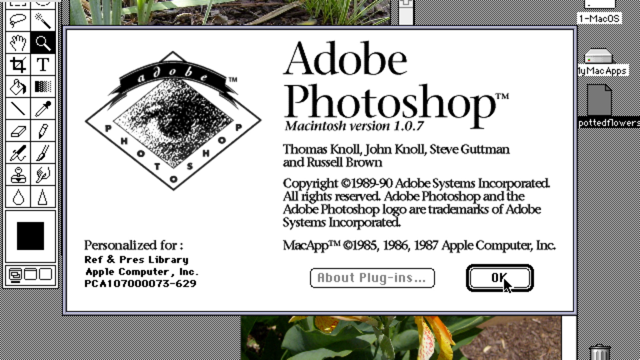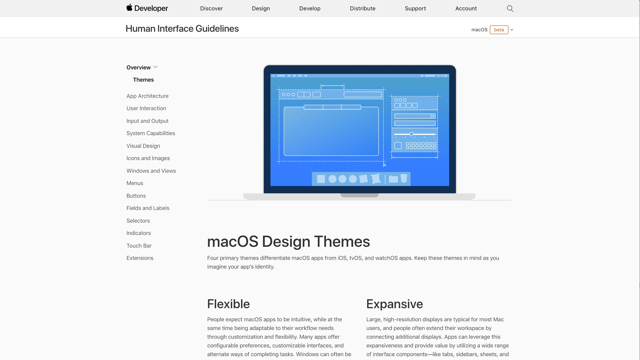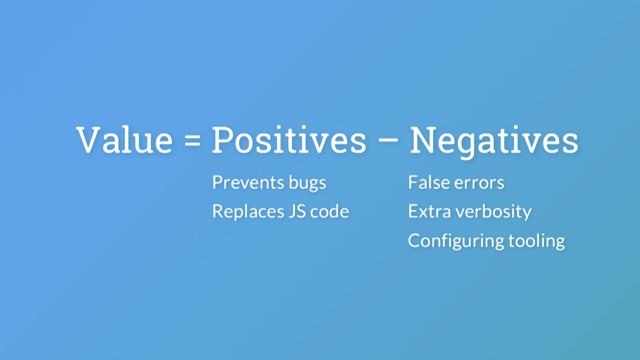
(lively music) - Thank you, it's great to be here.
Now the story of this coffee business starts in a foreign country and a conversation between two mates over lunch and a beer in a patch of shade, hiding from the midday sun.
Well, this was in Sydney of course, so everything was much cheaper.
Let's call it several plates of food and maybe a few beers.
But this coffee business didn't begin in Colombia or Kenya or Ethiopia, where coffee was first found.
Began here, a place called Tonsai, it's in Thailand.
It's an amazing place for rock climbing.
If you rock climb, that's an amazing place to be.
And I just finished a long holiday.
I had spent five years working at news.com.au. Took a little career break after that.
And was there with, oh sorry, that's me looking my most hipster possible, drinking a coffee.
I promise you it's non-alcoholic.
It's just coffee.
That's in Norway.
But my background's UX and design and a little bit of coffee.
I kind of got into coffee with Ben Buchanan, who I assume is somewhere in the room.
There he is.
He got me into it when I was working at News. And in my travels, I'd seen coffee subscriptions becoming a business that was starting to take root in different countries. and I've wanted that in Australia as a customer. But the cost of sending it out to Australia was just too much.
This is my mate, Reuben.
He had just started a cafe in Surry Hills called Sample Coffee, and was just starting to plan to roast his own coffees as well.
He would normally have joined me.
He doesn't like public speaking, but he would have joined me, except this is him, I think it was on Monday. That's him in Ethiopia.
He was over at a farm called Duromina.
So he's a little bit jet lagged.
He got back last night.
But anyway, Reuben knows coffee.
That's him in his cafe in Surry Hills.
And he wanted to share it with a bigger audience than just the small pocket of people that could reach that cafe.
And it took us a while to figure out the best way to do that as a team, but this is kind of the story of how we did it. And this is where we ended up.
This is the box that we send out to people. We're a coffee delivery business, so we send coffee in boxes.
Sounds straightforward.
We send that out every two or four weeks.
And inside that, whoa, too fast, we'll get back to that later, inside that, we send, you can see there, there's the card and a bag of coffee inside the box.
And that's the stuff that people actually receive. And we learnt three things in the process of the kind of 2 1/2 years we've been running this. The first one is that you should embrace what makes you you.
And I'll take you through these as I go today.
Second is to start small and learn quickly, which is kind of something that we do a lot in tech, but applying it to a much broader scale.
And the third is a concept that I tend to think of as leave things better than you found them, which I admit I shamelessly stole from Kris Howard's talk, I think about a month ago.
Love that concept.
So, Reuben wanted to start an online store.
This is my little moment of zen.
I don't know if everyone had a coffee at lunch, but this is my little moment of zen.
I didn't 'cause I would talk way too fast if I had. But that's coffee being made.
It's lovely.
Reuben wanted to start an online store.
And I offered to help him out.
I know digital stuff, he knows coffee.
That seemed like an obvious combination.
So we set him up with a big commerce website, because if you wanna sell stuff online, you need an online store, and that seemed like the obvious thing.
I'm gonna get rid of that.
So this is what we ended up with.
Really simply thing.
Used a template because I had a full-time job.
I didn't wanna get too involved in the actual day-to-day running of this.
But we hit this interesting point where it was an online store and online stores make a bunch of assumptions about what you're doing.
So Reuben is selling coffee, and coffee is a perishable product.
He roasts it once a week.
Once all the bags have been sold, that's it. That coffee is gone for the week.
But online stores assume that you have a wide range of products.
In this case, it's the end of the week, and there's only two left.
And it just, the whole website looks broken. It assumes you've got a lot of stuff to sell. And it was also really hard for them to get photos of all the coffees.
They're a small business.
They're in a tiny cafe.
And so not having the visuals also made the whole experience, let's go with less than ideal.
We also found that the usual approach to online stores doesn't work well for subscriptions.
And that's usually because it's kind of just shoehorned in.
They're meant to just sell you a thing, put it in the cart, type in your details, and done.
And you end up with things like this.
So we have to promise you it's a filter subscription. We have to describe it in a fluffy way that we can, that it's different every time you receive it. And then you've got this pricing thing, which is zero dollars for 250 grammes, and then these weird choices of do you want three months, but six deliveries? And you don't know what the price is until you pick one.
And all of this before you've even tasted it. So there's a lot of trust.
And in talking about this with John, he pointed out there's even more trust when you're buying things online that you're gonna brew and then ingest.
That's just a little bit freaky.
So yeah, you can see it's just, the whole is just a bit strange.
There's another way to do it I've seen some people do, which is this weird kind of recurring shopping cart where you add stuff to your cart and you say yeah, send that to me again every two weeks or every four weeks.
And that's kind of good.
It's a bit strange as a customer.
You're not quite sure what's gonna happen and you don't know how to change it.
I admit in let's call it research for our business, I signed up for a whiskey subscription.
Honestly, it did take me a couple of goes to figure out how to cancel my subscription. I'm not complaining.
I had more whiskey.
But it's just a really confusing experience. It's not what the website was designed to do. And on top of all of that, it's a tiny cafe. It's like, this stage is so much bigger than the cafe. There's not a lot of space.
Every inch of space is used for serving customers and making coffee, so they don't have room for things like a computer and all the printers and all the other things you need to actually run an online business. They're just kind of trying hard to be something they're not, let alone ad-hoc delivery.
Really messy.
You need to ring up the couriers and say, "Hey, "I need to pick up this afternoon." It's three o'clock.
By the way, we close in an hour.
Can you kinda come now? It just, it doesn't work.
Communicating with customers is really confusing at that point as well.
So instead of all that, we decided that we really just need to embrace what we are.
Instead of trying to be an online store, instead of trying to be Amazon, we should really be these coffee experts who have an expertise in that.
So looking at that, we have the pair of us.
My background's design.
I'm a bit nerdy.
I've been doing this for about 20 years.
I spend my day thinking about user experience and customer flows and moving pixels around a screen.
And I should point out, as Jennifer mentioned, this was all intentionally set up as a side business. I have a day job where I work with Scentre Group doing all the shiny new Westfield things, which is really, really good fun.
So the plan was to make this a predictable thing. Every two weeks, we'd spin up a team, we'd all hang out together, put coffee in boxes, and then all go back to our normal lives.
So that's my half as design.
And then there's coffee.
Reuben, John, the whole team that I get to hang out with at the cafe, and their background is coffee.
They've been doing this, again, for years.
For Reuben, it's his career.
He's been doing this about as long as I've been doing web stuff. And so you got one of us is all digital and all pixels, and the other is all flavour and sourcing and kind of what is the authority of this coffee. But we realise there's this interesting overlap in that, which is customer experience.
Big part of UX, obviously, thinking about customers.
Turns out a big part of coffee, when you think about cafes, is also all about customers.
You've probably got your local cafe.
You go there every day.
You probably started going there maybe because the sign out at the front was a brand you knew or it was just convenient.
But over time, it becomes much more about the people and the service.
And we realised that the cafe team really got customer service.
That's what makes the local cafe the local cafe. That's why you have this connection.
That's Nicole, Mitch, and Luke, incidentally, in Surry Hills.
And so based on that, we really changed our plan for deliveries to focus on bringing that same customer service approach that they had in the cafe and excel at in the cafe to online.
So we thought maybe it was time for a second go. Let's build a new system.
Let's help them be their best.
Round about the same time, Reuben decided why not rent a new warehouse space. This is over in St Peters.
It's a couple of suburbs kind of westish from here under the fly path.
And decided he was gonna open a roastery there and also a second cafe.
So a giant crate arrived.
Inside the crate was a new coffee roaster, which I think is Reuben's first child, judging by that photo.
(audience laughing) I got a giant standing desk for the days when I was working in there.
That was kind of fun.
And armed with this new coffee roaster and my shiny new desk, we thought it was a good time for a second go at this.
And there were three principles at the heart of this second approach.
First of which was being subscription only.
We were gonna set it up.
We weren't on an online store.
You would sign up and we would send you stuff every two or four weeks, your choice.
And if you ordered the day after we'd sent the coffee, sorry, you have to wait 'til the next one.
That's what we're doing.
And that relates to not overpromising.
Just make it crystal clear to customers what we are and what we do.
And lastly, really selling the coffee experience. Design the whole process around how do we showcase the experience of the team. Most of the team is in coffee, so that's really the hero there.
Ended up with this.
That was the website, I think, around about week three.
There are some lovely people who have been with us basically since day one, which is amazing, I'm humbled.
But the idea was this is a really simple website. It did very little and it just focused on the core things.
And part of that was the audience.
So, very careful phrasing on this, which is awesome coffee, brewed by you.
Brewed by you, implying that you're making it yourself, making it crystal clear we're gonna send you beans. And brewed is effectively code for saying we do filter coffee.
We do black coffee.
If you like milk with your coffee, sorry, we're not for you right now.
Does anyone here actually drink filter coffee? Ah, my people! I love you.
So we made it really simple.
You choose a bag size.
250 grammes, 420.
420, an interesting number.
I'll come back to that later.
Not a drug reference.
I promise you, not a drug reference.
You choose your bag size.
You type in some payment information, your delivery address, and you're off.
One of my favourite dumb facts about the website, the photo on the top of pouring the Chemex was somehow made pouring with one hand and taking a photo with my camera in the other in the back of the warehouse.
I wish I had a photo of how dumb I must have looked while doing that, because I'm me, of course, I photoshopped the hell out of it.
There's a lot less hair on my arm in the end result, which is definitely a good thing.
(audience laughing) The good news is I now have a little photo studio at the back of the warehouse.
A lot less hacky.
Conference talk, I'm, I think legally obliged, I think I signed a waiver saying I have to show this chart.
But as with everything, you go in with confidence, and then you discover all the things you don't know. In my case, a whole chunk of that was print.
I spent my entire career somehow never doing print things, just doing web, which was fantastic until I had to do print things. And secondly, all of the weird little details in running an online store.
I think I tweeted about this.
My favourite thing on the left-hand side of the chart is no nothing is spelled incorrectly.
I was gonna recreate it, but I love that so much, it had to stay.
Google Images.
So print, let's briefly talk about that.
I was doing print stuff, so obviously, I should learn InDesign.
That's how you print.
Ended up with a bunch of strange things.
This is the file where we had all our labels. But it's the size of a label.
It needs to go on an A4 sheet with lots of labels. So you take it, you put it into another file.
Then you save it as a PDF.
Then it goes on Dropbox and then the team in the warehouse printed it. Seamless, nothing could possibly go wrong.
I'm assuming somebody in the room probably knows more print than I do.
Most of the room probably knows more print than I do. I'm guessing that's probably not how you print correctly, but let's roll.
So I'm gonna add a clarify here and say I bring web design skill to the team, definitely not print.
Anyway, back to that overlap of the customer experience.
Taking that theory that most of that local cafe experience that people have is about personal connection between you and the barista, they know your name, they know your order.
If you've been on holiday, you probably talk to them about it.
They probably noticed you were missing.
When you come back, they'll greet you and say, "Hey, how was it?" It's this incredible personal connection.
We wanted to know could we do the same thing online. So we started with this bag of coffee, little postcard, nice photo of the farm.
On the back, we have a little story about the coffee. Pretty standard.
Thinking about the barista thing, we thought maybe we should put your name on there. That's a nice touch.
Again, don't know print very well.
Thought why not? Make a CSV off the website.
Load it in, mail merge it in InDesign.
Print it out, print a photo on the back of each of them, and then use a guillotine to trim it down because I'm always great with doing manual labour. Good news is now we do all that using the web, so this is all done now using print style sheets.
It's weirdly seamless.
I didn't think it was gonna be as easy as it was, but this is all stuff that we've had in browsers for ages and it somehow just works.
And the lovely thing is now it's in the web. Anyone can do it.
You don't need to have InDesign, which I do, they don't.
And suddenly, anyone in the team can do this. And it also means you can customise it much more closely because we're generating all that text.
Again, we're a subscription business, we're also legally required to have a referral scheme.
So everyone gets their referral code at the bottom. You end up with lots of postcards which look really lovely.
It was fantastic to see other people take photos of the collections of postcards. It reminds me of what I did when I used to subscribe to other things.
And then I have a collection of coffee stuff at home. It's really rewarding.
So, all of that goes into a box.
The box tells a little bit of a story.
Again, come back to that.
We need to seal the box.
Maybe that's another good chance for a personal connection.
And this is the first thing that people see when it arrives in the mail.
And so thinking back to the barista relationship, it's kind of like the greeting.
So of course, go off to Officeworks.
Set up a template.
Get some labels, mail merge away, off we go.
What's fun is people notice this.
It was one of the most shared things we did. This is Dan, who apparently makes the best coffee in Erskineville. Lovely sentiment.
Unless you also have a cafe in Erskineville that makes coffee, in which case, we had a bit of a discussion there about maybe we should say domestic or best home coffee in Erskineville.
But it's all good.
We rectified that on the next label that went to Dan. And everyone was happy.
That's Fleetwood Macchiato.
It's a fantastic cafe in Erskineville.
Highly recommend going there for food.
It's delicious.
The coffee is also very good.
It's the best in Erskineville.
Naturally, all of this is in the browser now, too. And one of the beauties of that is it can get even smarter.
So if we start down that same barista path of if it's your first delivery with us, we can change the message and say, "Hey, enjoy your first coffee." If you paused and this is the first coffee back after a break, we can acknowledge that and say, "Hey, welcome back!" So we do all of that now.
And even better, there's a little strip at the top that's kind of obscured by the inspector, but the team in the warehouse that are printing this can also go in and just blanket change everyone to be message name message.
So we can do things like Happy New Year.
It's a really flexible thing that's only really done with the web.
But back to this thing.
I couldn't find a good system to run the user experience for this.
We sort of covered the awkwardness of most of the systems online.
It's getting better now.
Still not that great.
So I decided that it'd be a fantastic idea to learn Ruby on Rails and write the whole backend and frontend myself. So it was kind of less like that chart and a bit more like this.
That's in Norway.
What was interesting was that made things, I was gonna, in my notes, I say a bit slower, a lot slower.
I'm not a good coder.
But that also meant that we had to think really carefully about what we do and the approach we take to everything.
And that's the second theory that we have, which is start small and learn quickly.
So we have this bias to doing everything manually if we can. So think about all of that stuff that was done in InDesign, because as bad as I am at print, I'm worse at coding.
And so it's faster to iterate in those tools than to try and write code.
And so we approached the subscription business the same way. Start simple, one question.
How much coffee do you want? There's no other choices.
Just we're gonna send you something.
How much of it do you want? And then, there we go.
We did have the choice of monthly.
We default to fortnightly everywhere.
But we liked fortnightly because that made it much more predictable for us because we're a small team trying to purchase coffee from farms, and that made it much easier to roughly know how much we had to buy.
At this point, it was all still pretty manual. Some photos here, courtesy of Tim Lucas.
You can see the coffee in buckets.
Second one is coming up with the tasting notes. I'm horrible at that.
That's why we have the cafe team.
They're much better.
Bags, and then bags being sealed.
At that point, we were still weighing out all the coffee with a little scoop.
There was a certain, particular joy to accurately weighing out 250 grammes just by eye.
A really quite nerdy, nerdy joy to that.
Now we have a machine.
Then once we had that better down, we added another choice.
So now we go do you want black coffee or do you drink it with milk? And again, referencing that's how the baristas talk to people in the cafe.
Once you choose that, choice of size, we've now added another size choice. You can get a kilo if you really like the coffee. And then we're now much more predictable in how we do things, so now we're gonna really show people the monthly option much more prominently.
Really, really simple.
A lot of this is similar to the design sprints process.
People have heard of design sprints? Show of hands.
Hey, awesome, most people.
Blue Bottle Coffee was a really good case study that Google Ventures did with design sprints. It's on sprintstories.com.
They went through a very, very similar process to where we ended up going.
Done all that, then just keep going.
We just kept iterating and adding more things. The ability to pause deliveries for a long time looked like a shiny automatic thing to customers. It was actually us manually doing stuff in the back. You would just fill out a form and it said it was done.
We then went and did something manually ourselves. We added the ability to bundle things.
So we know you're making coffee at home.
You're probably gonna need supplies for that. Let's start offering, bundling supplies, things that will help customers do what they need to do.
One of the really interesting questions I kept getting was when is my next delivery, which is on the website, but that's not where you go.
That's just not a useful place to go for people. I was getting asked that in most Slacks.
I hang out, if there's a coffee channel in your Slack, I think I magically appear somehow.
I'm in a lot of them.
Did some experiments with chat bots trying to replicate the experience of people talking to me, asking these things. It's like they're John.
But realised it was actually easiest to just tell people, hey, here's a link to a calendar that is your specific deliveries, and you can subscribe to it and it will tell you all this information.
It was just much, much simpler.
We rely on Australia Post to deliver things. They're actually really good despite the trashing everybody gives them.
They're, in our experience, touch wood, really, really good at this stuff.
But it does occasionally go wrong, so we built in tracking so that from a customer's perspective, we're on the front foot when something goes wrong. We would frequently tell the customer that there was a delay before the customer realised. So it was just us trying to be really, really in front of things from a customer perspective.
And what's interesting now is we're running a beta with sort of a new approach for us.
We're running a beta to try out new options to try and restrict who's doing things.
We're calling it Coffee for Good.
I'll explain more about that later.
But the idea is it's, by restricting it, it's an easy way for us to play with options in a way that we can take them away if they turn out to not be useful or to be a real drain on the productivity of the team. So in this case, you choose Coffee for Good.
You get a bit of a blurb, 'cause we want you to feel nice.
We're allowing people to pick a flavour, which is another option for us, and pick pre-ground, which is an interesting multiplier.
We then end up with 10 different options by the time you multiply that out.
So it becomes a much bigger kind of workflow for the team on the back.
And choices are difficult for customers.
You have this thing of am I picking the right thing, can I change my mind later? It's just one more thing for them to think about before they actually purchase.
And it is hard for the team in the warehouse 'cause they have to pick these things and then put them in boxes, which brings us to boxes.
It's kind of a crucial part of an online business. We did a lot of iterating on that one too.
That's a really early test that we did.
We bought a few of these boxes.
Found a place on eBay that would just send us five. Bought five, tested them out.
They seemed to do okay.
And did some tests, put the coffee in there, sealed it up, sent it.
It seemed to all survive nicely.
So then we went and bought the minimum quantity, which was a lovely idea until it showed up. And this whole concept suddenly got very real from just being hey, here's a little website I'm gonna tinker with to we now have a lot of cardboard boxes that we need to send to people.
Turned out those cardboard boxes were really annoying. You needed to sticky tape them shut.
I don't know how everybody else feels about the sound of packing tape being ripped off the thing, but do that for a few hours and you just slowly go crazy.
Now I mentioned before, 420.
Why 420 grammes? It's a bit of a weird one.
And it comes down to 500 grammes is actually a shipping threshold. So above 500 grammes, you start to get into all kinds of variations in price based on distance, based on weight.
It's just really complicated.
And again, not a good coder.
Don't want to be responsible for that.
(audience chuckling) So we worked out if we weigh the bag, if we weigh the postcard that we send to you, and if we weigh the box that all of this goes into, 420 grammes is the most coffee we can fit in there for you without going over 500.
So it was this weird, weird limitation, and we ended up with an accidental drug reference. (audience chuckling) Even then, occasionally we'd have situations where it got a little bit too heavy.
And so there were times where I had to sit there and manually trim about 20 grammes worth of cardboard.
That's about 20 grammes worth of cardboard off all the boxes.
Do things manually until it stops working.
Thankfully, we eventually run out of those boxes and got to play around with making our own. And in this case, we got to work with a bunch of really fantastic local suppliers.
So we worked with someone in Marrickville on how do we actually cut a die.
These are custom boxes for us so that we could do that trade-off of we want it to be sturdy enough to get through the post, but we also want it to be light enough that we're not eating up coffee that we could be sending to people.
Not literally eating, obviously.
And we wanna tell the story to our customers. And so that gave us a chance to actually put messaging on the box and tell stories and sort of brand it a bit more.
So, we made some tests.
And then we tried sending it to ourselves.
We threw some coffee in there, we took it to Australia Post, we Express Posted it to ourselves, and we saw how it turned up, which in this case, was not great.
We decided that box was probably gonna need to be a bit more sturdy, because I would be disappointed if I spent money and got that in the mail.
And this is where we ended up.
Outside of the box is really clean.
Craft paper matched the brand that the cafe was already using for everything. And inside, we had lots of really simple details. Again, we have this interesting concept of we're a online business, but once you sign up, you don't tend to come back. You just keep getting stuff in the post.
You don't visit the website again until you need to interact with us for some reason, like pausing.
So this is, the box is really our chance to keep reminding you of what's important to us and to be useful to you.
So on the left-hand side, it's a little bit hard to see, but there's a little chart that tells you if you're using this much coffee, use this much water for all the different sort of common sizes of brewing.
And that's intentionally on the flap so that you can just tear it off and put it on the fridge or put it next to something else.
So trying to remind people of what's important to us and help them be better at brewing, which is kind of our tagline.
Underneath the coffee bag, we also have a little map, just to remind everyone here's where all your coffee comes from.
It's like this little band across the world when you see it on a map.
It's a tiny, tiny amount of the world that all this stuff comes from.
And the best thing of all, in my opinion, about this box is we didn't need sticky tape anymore. We could just seal with a little sticker, and we're all good.
And also, it was designed to fit 420 grammes with no trimming of anything, so it just fit.
Thanks to Tim Lucas, I can tell you it doesn't fit a kitten.
(audience chuckling) But it does most other things.
Third concept, leaving things better than you found them.
And this is something that we've thought a lot about through the business.
And I tend to approach it in three ways.
And I mentioned at the start, I shamelessly stole this from Kris Howard.
Sorry Kris, if you're somewhere in the room. I approach leaving things better in three different ways.
One is for the team, so the people that we actually work with ourselves. Secondly is partners, and third is the planet.
All of those are very important to us.
Firstly, the team.
This is Mitch, Nicole, and John.
John is the one, if you get coffee from us, John is the one who's now mostly responsible for actually putting the bags in boxes and the boxes in the post.
He's fantastic.
I sit in my air conditioned office and he slaves away over coffee and boxes.
But most of the time, I juggle the hats of dev, design, customer service, research, marketing, all the things, and clients.
But as a team, most of the team deals with coffee and sourcing and roasting and serving fantastic coffee and that customer service piece.
And thing I discovered through this process, baristas are pretty nerdy, which you don't really think of.
They're just kind of like chatty people in a cafe. They're super nerdy.
They measure the amount of, the way the coffee's extracted using refractometry to figure out the total dissolved solids in it. And that's like a benchmark for them in flavour and taste.
This is a global water survey by baristas trying to figure out what's the chemical composition of water so that they can all balance the flavour.
I love question two, which titration kit did you use? It's super nerdy.
Fantastically, World AeroPress Championships. Anyone use an AeroPress? I'm sure a bunch of you.
They are a fantastic coffee-making device made by the guy from Aerobie who made the best Frisbee in the world.
That's it in the middle there, you can see the guy pushing down.
It's this weird coffee-making device which lets people just kind of play and flex. Like there's a recipe that comes with it, but there are honestly thousands of variations, which is why they have a World AeroPress Championships. It's on in Seoul this weekend if anyone's interested.
You can Google, you can see all the winning recipes.
It's amazing.
Anyway.
I got the team into Slack as part of this.
So we're using Slack.
For me, it was a fallback in case my coding didn't work.
At the least, pinged messages into Slack in a way that was traceable.
And slowly, it moved outwards as more of the team wanted to know what was happening with the online.
So just invited more and more of them.
And eventually, it became the way that all the baristas spoke amongst themselves and between the two cafes, because they're not sitting at desks.
They're on their feet all day.
They all have a phone.
And the push notifications in Slack were the easiest way for them to talk to each other. Hilariously, I then continued nerding out.
I got an If This Then That recipe that would look for location tagged photos on Instagram and then ping them into a channel on Slack. So the baristas would be sitting there making coffee and then get a little ping saying hey, somebody just posted a photo, and by the way, they're sitting next to you. Really kind of spooky, but they enjoyed it. But what was really fantastic was the website became the source of truth for all the coffees.
And prior to that, they were using spreadsheets, they were using Google Docs, they were using all these different things to try and keep track of information about coffees. And in the process, we just slowly extended the goal of the website and the information we stored on the website, so it was all in sync and everyone could use it. So now, the website is actually what's used to produce everything from the labels on the bags to the information cards that go out to all the cafes. If you go to the cafe in St Peters, there's a little coffee menu that just tells you what they're brewing that day. All of that comes out of the website.
And the idea is it just makes it easy to be consistent with everything.
If this coffee tastes like jasmine, it tastes like jasmine everywhere.
Doesn't go out of sync.
An example of that, this is the shiny new labels, as made by the website as opposed to my horrible InDesign skills.
And that let us build in extra little things. So previously, they had to date stamp everything. So they'd stick the label on the front, date stamp on the back of the bag, fill it with coffee.
It was a really manual process.
Now we can just go hey, what was the roast date, put it in this label and it's done once.
And best of all, it was really easy for them to edit the information about the coffees, because it's just a website.
You don't need skills, you don't need software.
Anyone can do this.
You can do this on your phone.
Happiest day was when I was sitting in the office working with a client.
This was probably about a year ago.
And I noticed that the team in the warehouse had added a coffee, picked a colour for it, added in all the tasting information and printed labels, and I'd still been merrily working away at a client and hadn't noticed until the end of the day. So they really suddenly had the ability to do so much more stuff themselves than they could before.
And lastly, partners.
I think partners is a really interesting one in thinking about how we can make the world better through our decisions as a team and as a company. And for us, the coffee that we send comes from farmers.
Generally, quite small farmers in very far off countries.
So when I talk about partners, I'm mostly talking about farmers that we work with. There are other people and companies involved between getting the coffee from the farm to us, but really, we're all about how do we help the farmers.
In this case, this is a photo from Finca La Bolsa, which is a farm in Guatemala, not far from the Mexican border.
And that's Maria Vides and Renardo Ovalle.
I probably got that horribly wrong, I'm sorry. They're the second generation owners on this farm. And you can see they're standing in front of this. And you can look at the terrain behind them and picture how difficult this country is to farm in.
When we think about farms here in Australia, we think about large, flat land.
But the best coffee is typically grown on the sides of mountains.
That's why it tastes good.
It needs elevation and it needs a certain amount of rainfall and a certain amount of sun.
And that's very different to here.
So when we talk about farms, that's the kind of thing we're talking about. These are the people who farm it.
If you haven't seen a coffee tree, this is a coffee tree.
Those are cherries.
They're red, they're green.
Like most fruit, they ripen at different speeds. The red ones are ripe, they're good to go.
The green ones, you probably don't want.
They're not gonna taste good.
And this is what it's like when someone picks it. So the important thing about picking is they have to pick the right ripeness.
It's like cooking anything.
It has to be consistently right the way through. So if you have underripe and overripe, they're gonna taste different when they're roasted, and that's not good.
But in that terrain, that means they have to go through and do multiple sweeps of this farm days after days after days as the trees ripen.
It's a really time-consuming, complicated process.
It's a lot of manual labour.
But the return for that is buyers like us are really happy when we see that kinda thing, because that's really consistent coffee.
It's being well picked, and they earn much more money for that.
That is rewarded by the market.
This is another shot from that same farm.
You can see the terrain is pretty steep, pretty rough. And you can see there's somebody carrying coffee on their back through that, which is again, very hard work.
I do not envy them at all.
Coffee trees on the left and the right.
And jump to Kenya now.
Same kind of setup, different country.
But it's really hard work.
Actually, I'm gonna jump back to that photo for a second. One thing I did think about this morning, watching Genevieve's talk, is thinking through those four steps that she had of automation, of how far we have to go.
Like we tend to think about all this from our perspective here, but then you look at photos like this and realise there's a lot of people in the world who haven't even made it to the first and second stage on that yet.
Anyway, coffee then gets, it's picked.
It's put into tanks.
It's washed, it's processed.
There's lots of work that happens there just to try and remove all the flesh.
That red that you see is the cherry.
Inside that is what we call the bean itself.
Again, lots of manual labour.
After all that's happened, it then goes out onto, in this case, a concrete patio.
Sometimes, it's raised mesh.
And it gets raked until it dries in the sun. It's unbelievable amounts of work.
If it rains, they have to have covers that go over the top of it.
So then we were asking what more can we do. We're here in Sydney.
These farmers are there.
We already pay, we're in what's called specialty coffee, it pays much higher than commodity.
Most coffee is traded as a commodity, which is like oil.
So we're looking at different companies.
This Toms.
People here have heard of Toms? Think they're slowly coming into Australia. They're quite big in America.
They're a shoe company, but they have this One for One slogan.
And what's interesting about that, actually, they explain it well themselves.
I was gonna put it into words, but I may as well use theirs.
With each pair that you purchase of Toms, they'll give a pair of new shoes to a child in need.
It's this One for One concept.
And it's worked really well.
People get that concept.
It's a really simple way of explaining giving. There is a second company called Warby Parker. They make eyewear.
They make glasses in the U.S.
And they've applied the same kind of concept. Again, give a pair for every pair you buy.
The interesting thing that they've done that's a bit different is rather than just giving glasses to people in other countries, they actually work with a local partner who goes in, provides funding, and helps set up local businesses to do the eye testing and actually sell the glasses at very low prices, but as a real business.
So it's rather than just going hey, here's charity, it's also going hey, here's charity, and also providing some social good.
Same idea, just a bit of a deeper way to help.
And here in Australia, a good example of the same approach is Thankyou, who started with water, ironically, not in the photo on their website. But they started with bottled water, and every time you buy a bottle of water, they would give money to a charity around water purification and sanitation.
They've expanded out of that, as well as that into body care and baby care and nappies and so on.
And what they've done that's really interesting is they've connected the giving to each of those different product ranges.
So if you're buying stuff for babies or nappies, the giving charity, the giving approach to that goes to things around projects for mothers and postnatal care and immunisation.
So you're buying something, they're connecting to giving to something that's hopefully important to you.
And we think of that as giving by growing together. So trying to find targeted projects and partnering with local groups who can be on the ground when you can't.
And that's something that we're working with several people in our sourcing chain to try and figure that out.
And that's where the Coffee for Good part of the project comes in.
It was originally called Better Coffee, which explains the title of the talk.
We've since changed that 'cause we think Coffee for Good is a better name. I should mention that Coffee for Good, we're giving a percentage of that to the charities. And lastly, the planet.
And our aim is to cut down on waste wherever we can, starting with plastic.
Satchels, which are kind of the obvious thing everybody sees with online shopping.
Satchels are fantastic.
They're really light.
They're really cheap, and they're really weatherproof.
Tick lots of boxes.
Problem is they tend to be really difficult to make from recycled materials.
They're single use, and most councils can't recycle them.
There are places that can.
If you get them through Australia Post, they will actually take them back.
But even that's a really wasteful process.
You have to send something single use back to somewhere else in order to recycle it. It just seems really wasteful.
So we've had a blanket policy of never use satchels unless we have no choice. And that's where we ended up with boxes.
So we started here, the box on the left.
We had to use sticky tape.
That was a horrible experience.
Don't use that much sticky tape.
You'll go insane.
Ended up here, reduced the need for sticky tape just using labels instead.
Makes it a bit more simple.
But the trick with both of those is the bag itself still can't be recycled and still can't be composted because it's bonded plastic.
So what we're playing with now, rethinking that whole process again is that's a simple paper envelope.
Really, really easy, goes through the post.
And working with what's a recycled and compostable bag.
Interesting thing was thinking about we had the origin in cafes where the bag has to sit on a shelf and kind of sell itself on a shelf to other people. If you're getting it in the mail, it doesn't need any of that.
You've already been sold.
You already bought in.
You already know the story.
So this is just going hey, we're sending you coffee in the mail.
What if we just send you coffee in the mail? So we're testing that at the moment.
We're hoping it works.
We're still finding out whether it all survives. I'm waiting for the next really wet day to make sure that it doesn't start composting by itself in your letterbox.
(audience chuckling) Be awkward.
And yeah, that was us testing it the other day. I mentioned before, also important for us to work with local suppliers. Cuts down on the miles everything travels.
Also just really good to work with local people. But for now, that's what most of our stuff goes out looking like. And looking back at the process that we took to get here.
Bunch of it's embracing the skills that we each brought to that game. There's also starting small, learning quickly, doing things manually where you need to until you can automate them.
And lastly, trying to leave the world a better place than when you found it.
And with that, thanks.
(audience applauding) (lively music)
